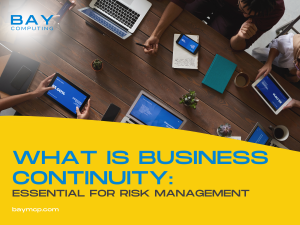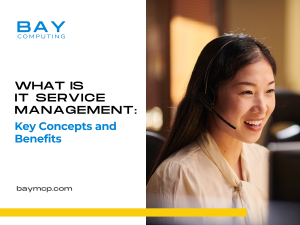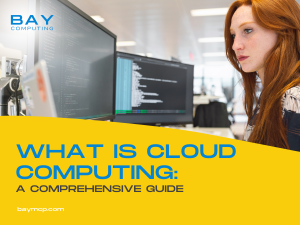Latest News and Resources
Why Businesses Need Managed IT Support?
Technology is key to maintaining a competitive edge in today’s business environment. Managed IT support gives businesses access to a…
Read MoreIs Cloud Computing Important for Web Development
Cloud computing has emerged as a game-changing force in web development, offering benefits that extend beyond traditional methods. It is important…
Read MoreWhat is a Business Continuity Plan
Every business, regardless of size or industry, faces unexpected challenges—ranging from natural disasters to cyberattacks and system failures. A well-structured…
Read MoreWhat is Business Continuity: Essential for Risk Management
Business continuity is the ability of an organization to keep essential functions running during and after a crisis. This involves…
Read MoreWhat Is IT Security: Protecting Digital Assets
Safeguarding information is more important than ever. Information technology security, commonly referred to as IT security, is the practice of…
Read MoreWhat Is IT Service Management: Key Concepts and Benefits
IT Service Management (ITSM) is a strategic approach to designing, delivering, managing, and improving the way businesses use information technology.…
Read MoreWhat Is Cloud Computing: A Comprehensive Guide
Cloud computing has transformed how businesses and individuals access and manage data worldwide. It is the on-demand availability of computing…
Read MoreData Loss Prevention: Essential Strategies for Modern Enterprises
We all fear failure. And for those of us working in technical IT support, the two words which immediately strike fear into even the hardiest of souls are – Failed Array
To explain what a failed array is you first need to know a couple of things about computer servers.
And to get us started, let’s answer:
What Is An Array?
An array is a series of hard drives that can be combined in multiple ways to appear as a single large drive. Unlike most desktops, computer server systems often have two or more hard drives attached to them in what are then called redundant arrays, or more commonly:
RAID (Redundant Array of Independent Disks)
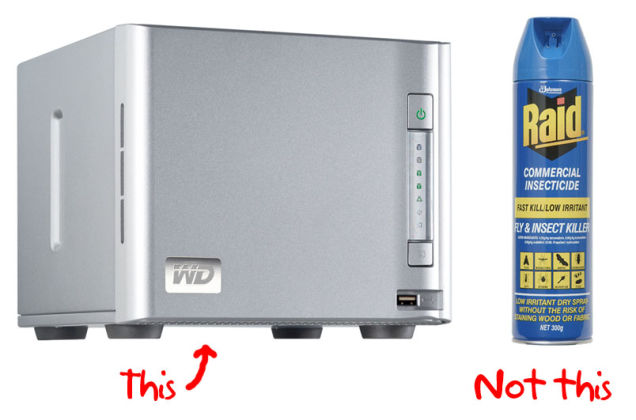
Now RAID started out as “Redundant Array of Inexpensive Disks” at a time when hard drives:
- Were more expensive
- Had less data storage capacity
- Lacked failover protection/ fault tolerance
Because of these factors, RAID systems were first created using multiple inexpensive hard drives into single, more powerful, and faster volumes. Even more importantly, the design of RAID systems enabled redundancy as a protection against single points of failure.
For example, if you have two 1 Terabyte (Tb) hard drives in what is called a Raid 0, those two individual drives will appear as a single 2Tb drive.
1TB + 1TB = 2TB.
While the ways in which you can assemble a RAID system vary depending on what your business needs are and how much your business has budgeted, outside of RAID 0 (single volume), the end results are nearly always seeking to serve the same basic purpose.
Which is to serve as a nice large drive that your business network can see and use to fulfill your data redundancy and performance needs.
That is of course, until something goes wrong.
It should be noted- Just as an array can be configured in countless different ways, there are also many different ways in which they can fail.
The most common problems usually involve a hard drive failure of some sort, which is why any reliable IT provider will always push you to incorporate data redundancy into your computer networks and technologies.
Whenever a hard drive failure does happen, having a local Bay Area IT services team ready to provide you the technical support your desperately need is key.
Not only will they be able to hit the ground running (by being familiar with your business IT setup) but it is their job to stand between you and the dreaded monster called… DATA LOSS (cue appropriately ominous music).

Data Backups: The first and most important step of file maintenance
The very first way in which we handle IT work to help maintain all of your files is through backups. If you ever work with an experienced IT professional, chances are you’ll often hear the battle cry, backup, backup, BACKUP!!!
Data backups can be accomplished through a number of different methods, but the first step is dictated by the demands of your business needs, followed by the relative size of the budget that your company has available.
Depending on which data backup options are available, the means of backing up can be as simple as copying data from one hard drive to another (often known as data replication) all the way up to advanced virtualization and the replication of your data to multiple locations (known as data redundancy and replication).
So what happens after you realize that one of your files is corrupt?
With the right backup and data recovery solutions in place, the emergency which previously would have spelled disaster and mayhem is suddenly tamed when you can just call your IT services provider.
Having data backups in place allows you to avoid the irreparable damage of a data loss event. With a pre-planned data recovery solution, you know that your IT support team has reliable access to your most recent backups and can restore your data to where you need it to be.

How Does An Array Fail? Why Does An Array Fail?
Now after we have retrieved the files that you need, it’s on to step two: Finding out why your array failed.
As I stated previously the most common and dastardly ways that an array can fail is through simple hard drive failure. Most server hard drives spin at over 10,000 RPMs a figure most sports cars would envy. When they spin so fast, any bump or collision with the server can cause over 250 of G-force damage.
Context: If you or I were to suddenly encounter 250 G’s we would instantly be turned into pudding. Now if your business is lucky (e.g. well prepared and well-funded), hard drive failure can sometimes be as simple a matter as changing out the drives which are indicated by the red lights on the front of your server.
Yet occasionally, it isn’t so easy.
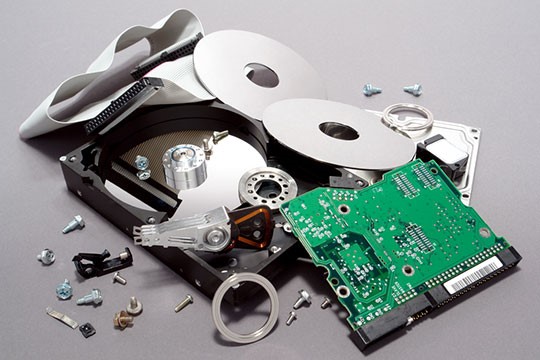
I still remember one instance where I was working with a client who had a server that didn’t have the normal, nice, clear and easy indicator lights to tell us which drive was failing.
After polling the backups and getting the data in a safe state, we had to go through and manually determine which drive was failing.
The problem with this is, if you pull the wrong drive, you can destroy the array entirely. Basically, this turns a relatively simple job of changing out a hard drive, into a task more akin to trying to decide which wire to cut before the bomb goes off…

So the first thing that I did (after creating yet another tertiary backup) was to go into the bios of the computer and see if there were any clues there.
After that failed, we were able to run a utility built into the server which scanned the array and told me which drive wasn’t responding properly.
Using this new information, I was able to carefully trace each connection on the server to each drive and with a magnifying glass, then look at the labels on the motherboard.
After all of those steps and extra precautions, I finally found the path which led me to the correct drive.

Now once the failed drive was identified and located, it was simply a matter of replacing the drive and rebuilding the array (And then of course, creating yet ANOTHER backup.)
While we were able to fix all of the problems involved and get the client under way with the minimum level of downtime possible, the true hero of this story still is and will always be the backups that we had implemented.
Without those data backups, each and every step we took, including merely scanning the hard drive, would have run the risk of permanently destroying the array and losing years of work.
Long story short, we’re back to the battle cry: Backup, Backup, BACKUP!!!
Find yourself wondering if your company’s your data backups and data recovery options are enough to keep you safe?
Feel free to Contact Us with any questions you may have about RAID, backups or redundancy options at 925.459.8500!
Read MoreHow To Stop Malware Attacks: Essential Prevention Strategies
In my last blog post, we discussed the basics of malware, reviewed the conditions malware requires and also introduced a few of the most common forms that it takes. Now that you’ve got a basic understanding of “what” it is, it’s time this IT support technician taught you how to avoid malware attacks before they can take hold of your systems.
Here are 6 simple yet crucial steps which will help prevent “disaster” situations from happening to your organization. As we continue, I’ll be providing you additional advice and malware protection tips from my years of experience working in the field of IT support services throughout the Bay Area.
1.) Have Two User Accounts

Log in to your PC as a standard user, not as an Administrator.
This means you should have two user accounts: one non-privileged user account, and one privileged user account. That way, anything that requires “elevated” access (non-standard privileges) will need to explicitly ask for your permission.
In order to maintain security, your administrator account should have a different password from your main account.
2.) Read Pop-Up Messages That Appear On Your System
This is an important part of avoiding malware problems in the first place. Do NOT just click “OK” to everything.
- Try not to get into the habit of hitting “OK” to everything: Web sites can create pop-up windows that masquerade as system warnings or update reminders.
- Without reading every pop-up, you could unknowingly enable a malware attack.
- If you are in doubt about a particular pop-up message that appears on your screen, try dragging it to the right or left of the web browser window.
If you can’t drag it outside of the web browser, it is not a system message.
Use the [X] button on the window to close it, and you may want to close your web browser as well (and avoid that web page in future!).
3.) Double-Check Application Updates

When you are prompted to install updates for well-known applications, make sure that it is something you actually have installed on your system. If you are in doubt about an update, close the window (using the [X] button) and visit the web site of the application vendor to check for the update.
4.) Use Automatic Updates For Existing Applications
If there is a way to automatically apply updates for an application you want, need, and trust, use that update method. It is better to allow trusted programs to update themselves automatically.
Example: If you have told Flash Player to “Always Update” without prompting you, and later you suddenly get a prompt to update Flash Player, you can be pretty sure it is a malware attack of some sort.
5.) Let Windows Update Download And Install Critical Updates.
Try to set a schedule for when you download full system updates. This will ensure that the download goes smoothly, and does not crash your computer. The ideal time is when your computer will be on, and your network connection will not be overloaded.
6.) Delete Questionable Emails
The simple rule for e-mail is when in doubt, throw it OUT.

- Be highly skeptical of any attachment or link, even from people you know, unless it is something you know in advance is coming.
- It doesn’t hurt to call or text or e-mail someone to make sure. When an email seems out of place think of what Professor Moody always reminds Harry Potter: “Constant Vigilance!”
- Be especially wary of email messages purporting to be from your bank, from software vendors, or claiming to be fax messages.
- Example: If PayPal, Amazon or your bank sends you a link, it doesn’t hurt to simply open up the web site separately yourself, instead of clicking a link sent via e-mail.
- There are now many different ways to disguise a link – even experts can be fooled.
While these malware protection methods may take a few extra seconds, in the long-run they will help you avoid hours of downtime on clean-up and data recovery. If you are interested in a more advanced form of data security, give Bay Computing a call at 925.459.8500 to ask about our IT security solutions!
Read MoreTop IT Tips to Keep Your Business Safe
Want to Keep Your Network and Your Business Safe?
Here’s What Your Employee End Users Really Need to Know: Advice from Your IT Support Technician

One of the most common things that people forget when thinking about office technology and network management is actually one of the its important elements: the basic security and daily habits of end users.
While those of us who work in IT solutions can put as many locks on the gates as we can possibly think of, it does absolutely NOTHING, if the people who actually use the business network don’t use, or don’t want to use, or simply don’t know how to use the fundamental security protocols listed below:
1.) Always Use Strong Passwords: Use passwords with at least 8 characters and three different variables of at least one uppercase letter, one lower case letter, and one number or symbol.
Your Protections Need Strength (and Complexity)
For example: 1L0v3B@y! or J@m3$=Kool

Common and Simple Passwords Don’t Keep You Protected
More Specifically, full words, sequential numbers, etc. such as: “123ABC” “LetMeIn” or “Sunshine15” are easily guessed and far too weak to keep your business safe
Think of it this way, would you feel comfortable sending off this “strong” little lady to fight/ fighting off your bad guys?

Why Should You Bother? Current reports state it can take cybercriminals under 1 minute to hack through to your network when passwords consist only of letters without any variables.
2.) Change Your Password Often: The industry standard is to change your password every 90 days, but firms concerned with the security of their technology solutions may enforce expiration dates at the 30 day or 45 day mark.

Why Does It Matter? One common attack method the bad guys use is to find out your password and then continue to use it, or even publish it to others for their use, so you want to make sure that you change your passwords at a regular basis to avoid this sad fate.
3.) Never Use the Same Passwords Simultaneously on Multiple Accounts: Try to use a unique, different password for each of your main accounts and or logins. Don’t give cybercriminals the keys to your castle!

For example, create a single, unique password for your gmail account, another unique password for your bank, and a third one for your office IT logins.
Why Is It Worth My Time? One of the easiest ways for hackers to bypass all the security measures your business has invested to put in place is for them discover the password of something “innocent” or innocuous… Think of something like your Twitter account, which you may leave open on different devices or have a simplified password for.
From there, your attackers then use that password to try to get into your email, your banking accounts or other crucial accounts where the real damage can be done. If you use the same password across different accounts, you’ve suddenly given your attackers the keys to your kingdom and it’s suddenly a cakewalk for them to access ALL of your systems.
4.) Avoid Pop-Ups Like the Plague: If you see a pop up window always avoid clicking on anything related to it and call your IT solutions provider immediately.

One of the most common and clever ways hackers use to get into your business systems is to masquerade and present themselves as a reliable, trusted, and often authoritative party such as a government agency or even as an anti-virus update for your system.
Please, keep in mind that NO reputable anti-virus system will ever create a pop-up prompt on your screen.
If you see this type of prompt, you should IMMEDIATELY close down your browser and power off your machine (without clicking on any links) and contact IT support.
Why so extreme? The latest Breach Investigations Report has shown that the median time it takes for an employee to open a phishing message, have it land on the company network and then compromise their business’ data is only one minute and 20 seconds. If you cannot close the browser do not click on anything, turn off your computer ASAP and contact your IT services provider.
5.) Do Not Save Passwords: Just as you wouldn’t hide a house key right under the front doormat, you shouldn’t leave your passwords saved.
When a website has a password requirement and your browser asks if you want to save your password avoid doing so, because this embeds the passwords onto your system’s hardware.

Why does it matter? When you save your passwords, if your system gets lost or stolen the thieves suddenly have access to all of your and your clients’ information.
Additionally, if you encounter any problems or have to reach out to your bay area IT services team for troubleshooting on your account, people who save their passwords usually proceed to forget those passwords. This means that whenever you request IT support, your support technicians will then have to request a new password for you.
While we are happy to help you navigate any password issues you may encounter, the reset process often leads to delays which can significantly inflate the time needed to complete your helpdesk service request and to resolve your problem.
6.) As a Rule of Thumb, NEVER, install anything yourself, EVER: One of the top ways cyberattacks succeed is through tricking employees and end users into actually installing a viruses or malicious software (malware)for the hackers; believe it or not, they get you to do their dirty work for them!

Really? But I Know Who This Is From: Even those applications that you know are from trusted sources can cause other problems further down the road if they are not installed properly. These issues pop up like weeds if there were any other kind of requirements or special configurations which may not have been installed properly or completed beforehand.
Pro-Tip: When you have the right IT support company on your side, you have the resources necessary to ensure sure your computers are configured and maintained properly. Keep things simple for yourself and use this to your advantage! (Plus, who doesn’t love coming back from lunch and finding that annoying task you were dreading fully taken care of for you?)
7.) Always Update Your Anti-Virus, and If Possible, Choose a Centrally Managed Anti-Virus: Viruses, malware and all other forms of cyberattacks are always changing, ever-evolving and improving every day.

I Already Have Anti-Virus, and Those Updates Are Annoying: Just because you have an anti-virus installed on your device does not mean that you are safe. With each new attack, both the good guys and the bad guys learn something new, and that’s exactly why it is absolutely crucial that you make sure you update your anti-virus on a regular basis.
I strongly advice that if at all possible, you work with your IT provider to find the right centrally managed anti-virus solution because this eliminates the risk of having an “oops” and “ut-oh, I forgot” moment spiral into a disaster.
With centrally managed anti-virus, your helpdesk team takes care of ensuring that updates are completed across your organization’s system on a dependable basis, and if an update fails for whatever reason, they know and can reach out to you to verify what’s going on. Without this built in-protection, it just becomes too easy to fall trap to waiting until “tomorrow.”
Read More




